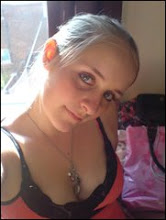 Bullet Boy - Title
Bullet Boy - TitleSaul Dibb - Director
2004 UK
Location & Setting of the film:
Hackney, London.
Prison setting at the the beginning of the film, the main character Ricky is trying to avoid his family at his house when he is released from prison as he doesn't want to bring anything bad or any violence into the house. Realisation of what he has done, maybe he feels that he has messed up and he doesn't know how his mum will re-act now he is out of prison. When he realises she has made an effort to throw him a surprise party he realises the fact that family are always going to be there thick & thin through whatever happens.
He goes to his girlfriend's house to see her, the sense of love and security when he is with her, is shown as he doesn't want to bring violence or crime into the relationship. I personally think that the way he shows his passion for her, is not really suitable for this film as i think it could be shown in other ways but i think that the comedy factor of it does make the film seem more realistic.
Narrative Structure:
i find that the point of view is mainly of third person, as you feel like you are there in every scene. Sometimes you really kind of get a feeling of understanding.
The use of time in the film is in reference to sweet sixteen as it seems reflect on real time but some parts are sped up for the pure fact of it would be boring if it wasn't. This wouldn't excite the audience into watching the film, whereas it does with the way that it has been directed.
Characterisation:
Ricky - the older brother - prison at the beginning, fatherly figure to his older brother, as he looks after him and Curtis looks up to him. Ricky has a lot of respect for his family & his friends, especially his friend wisdom he seems to be like an older brother to him as he wants to look after him. Ricky seems to have alot of responbility on his hands and he wants to get away from the life of crime & violence and move away with his girlfriend to start a new life.
Curtis-younger brother - trys to look up to his older brother and he follows in his footsteps as he seems to want to re-inact what his brother does, and copy him.







